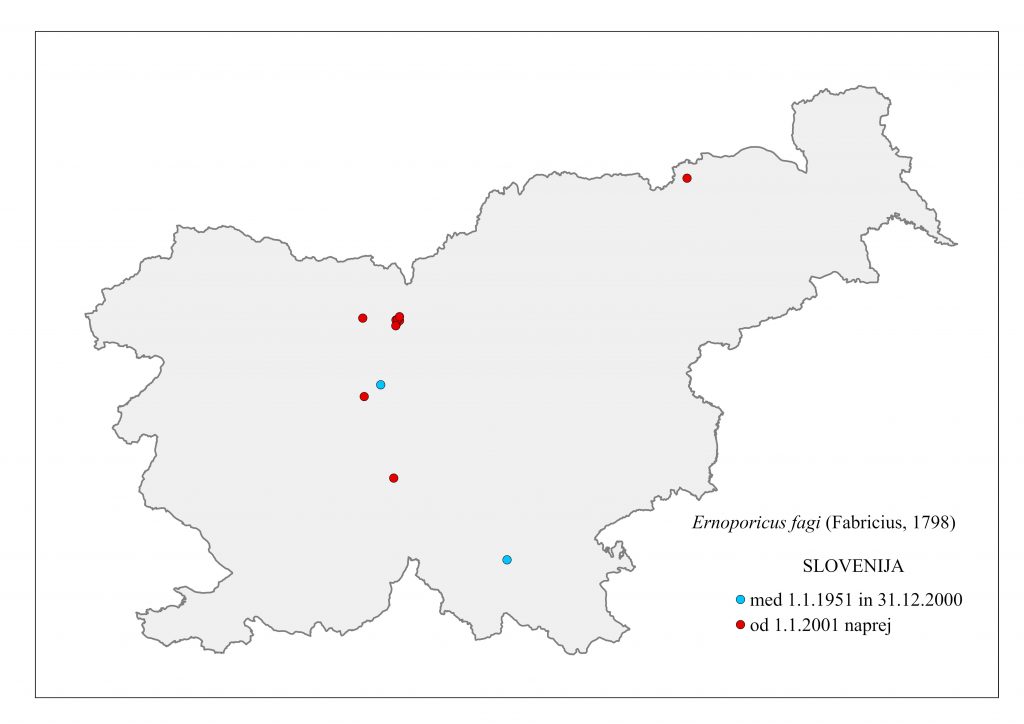20.02. Ernoporicus fagi (Fabricius, 1798)
Presence
E: AL AU BE BU CR CT CZ DE FR GB GE GR HU IT MC NL NR PL RO SK SL* SP ST SV SZ UK YU
A: TR
Older catalogs and keys – citations of name
Grüne 1979: Ernoporus fagi Fabricius, 1778; Freude, Harde, Lohse 1981: Ernoporus fagi Fabricius; Titovšek 1988: Ernoporus fagi (Fabricius); Pfeffer & Knížek 1993: Ernoporicus fagi (Fabricius, 1798); Pfeffer 1995: E. fagi (Fabricius, 1798).
Figure 84: Ernoporicus fagi, distribution map according to historical and recent data
Ecology and presence in Slovenia
The species is distributed in Central Europe, Scandinavia (except Finland), the southern European part of the former Soviet Union, Romania, the former Yugoslavia and Asia (Turkey). In Slovenia, records are restricted to the Gorenjska region, the vicinity of Ljubljana, Dolenjska and Štajerska. In Gorenjska, the species was trapped at higher altitudes, up to 1478 m (Figure 84). Hosts include Fagus sylvatica and F. orientalis, rarely also Carpinus betulus, Quercus spp. and Betula spp.. In Slovenia, it is found only on F. sylvatica. It develops two generations annually, the first in April and May, the second in July and August. Females often colonise dry branches or physiologically very weak beech trees. The longitudinally oriented tunnel system is irregularly shaped. The narrow, elongate beetle is dark brown to black, the antennae and legs are yellow-brown. Adult length is 1.5-2.0 mm, the tunnel system is irregularly longitudinal. E. fagi is a distinctly secondary saproxylic species and is of no economic importance.

